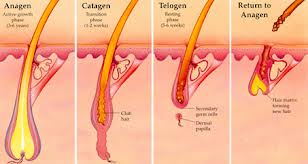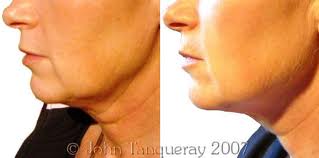Radiofrequency ablation and laser treatment
Probably. These are newer treatments for varicose veins. There hasn't been enough good research to say for certain how well they work in the longer term, but studies so far are promising.
What are they?
Surgery is the only way to get rid of varicose veins completely. But it's a big operation and there are risks. Surgeons have been looking at other ways to treat varicose veins that may be easier and quicker than traditional surgery. One of these ways is closing the vein with heat.
Your surgeon can use heat to close your varicose veins in several ways.
Radiofrequency ablation
In this method, your surgeon puts a thin instrument into your vein. The instrument produces energy, which heats and seals off your vein. This is called radiofrequency ablation. Surgeons usually use this method for larger varicose veins.
If you're having treatment for a varicose vein in your leg, your surgeon will:[1]
Give you a local anaesthetic to numb the area, so you'll be awake but you won't feel any pain
Make a small cut above or below your knee, depending on the area being treated
Put the heating device into your vein or thread it through a very thin tube (called a catheter) and then into your vein
Heat the device and pull it back slowly through your vein.
The heated device seals your vein while your surgeon pulls it out.
Laser treatment
In this method, doctors use a laser to seal off veins.
If you're having treatment for a varicose vein in your leg, your doctor will:
Give you a local anaesthetic to numb the area, so you'll be awake but you won't feel any pain
Thread a thin tube (called a catheter) through a small hole in your skin into your vein
Place a laser in the tube, so that the intense light from the laser heats your vein and makes it close up
Slowly remove the laser, sealing off your vein as the laser comes out.
Laser treatment is quick. It takes just 90 seconds to treat a 30-centimetre (12-inch) length of vein.[2]
The National Institute for Health and Clinical Excellence (NICE) is the government organisation that advises doctors about treatments. NICE says that both radiofrequency ablation and laser treatment are safe enough and work well enough for use in the NHS. But we don't know the long-term effects of these treatments. You should talk to your doctor about the risks and benefits of having one of these treatments.[2][3]
How can they help?
Radiofrequency ablation seems to work as well as having surgery to strip out varicose veins. A large summary of studies, called a systematic review, found that both treatments worked well in nearly everyone who had them.[4]
Radiofrequency ablation may be less painful than having veins stripped out by surgery. People also get back to normal more quickly after this treatment than people who have surgery.[4]
Laser treatment may also work as well as surgery, and cause less pain and bruising. People also get back to normal more quickly after this treatment than people who have surgery.[4][5][6][7][8]
But we don't know whether veins are more likely to come back after these treatments than after surgery. We need longer and bigger studies to tell.
Studies have found that radiofrequency ablation and laser treatment work about as well as each other, but that radiofrequency ablation may cause less pain and bruising.[9][10]
How do they work?
Usually veins carry blood upwards through your legs to your heart. They have one-way valves in them that keep blood flowing in the right direction.
In varicose veins, the valves don't work properly. So blood slips backwards into the vein, causing your vein to bulge. To learn more, see What are varicose veins?
Closing up your varicose vein with heat or lasers means blood can no longer flow through that vein, and it flows through your other veins instead. So blood no longer pools in your varicose veins, causing them to bulge.
Can they be harmful?
Radiofrequency ablation
Radiofrequency ablation does sometimes have side effects.
Between 6 in 100 to 7 in 100 people who have radiofrequency ablation get burns.[3] But as doctors get better at using this technique, burns should become less of a problem.
Some people get an unusual feeling in their legs after having radiofrequency ablation.[3]
About 2 in 100 to 3 in 100 people get inflammation in the vein.[3] Doctors call this phlebitis. If you have phlebitis, your veins can become swollen. They feel hard and warm, and look red. The area can feel sore.
More serious problems, such as having clots in your veins (deep vein thrombosis) or a blockage in your lungs (pulmonary embolism), happen in less than 1 in 100 people.[3]
Laser treatment
You're likely to get some pain and bruising after having laser treatment.[2] But this will go away after a few weeks. Some people also get inflammation after having laser treatment.[2] It's also possible to have loss of feeling, burns, and damage to other veins, although these problems aren't likely.
Compared with radiofrequency ablation, laser treatment might give you more pain and bruising in the first couple of weeks afterwards.[11] But there doesn't seem to be a differnce in the longer term.




































.jpg)









